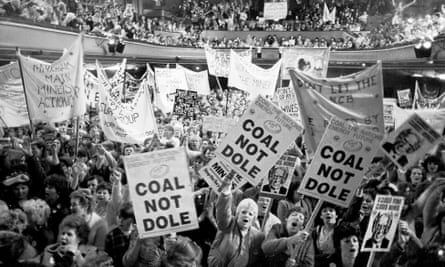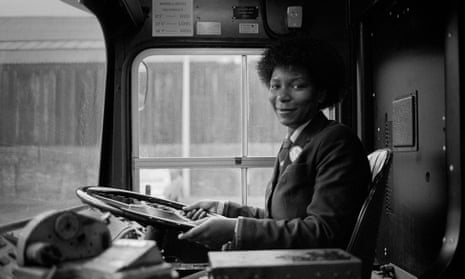Between 1979 and 1981, employment in the British steel industry halved from 156,600 to 88,200. Inevitably, Sheffield – the so-called steel city – suffered very badly. Almost overnight, silence replaced the beat of the drop hammers, the glow of the steel works faded to grey, and the pervasive smell of grease and machinery disappeared. As the Bessemer converters became unproductive, so did the thousands of people who lost their jobs.
But for Martin Jenkinson, who realised he had an eye for photography only after his redundancy from the steel works in 1979, it was a well-timed revelation. It was the dawn of a new era in a city that had relied on steel for the bulk of its economy. He was perfectly positioned to capture the years of struggle and triumph that followed those first mass redundancies, focusing his lens on everything from abandoned factories to redevelopment projects, the Battle of Orgreave and South Yorkshire’s first black female bus driver.

A retrospective of Jenkinson’s sensitively framed images entitled Who We Are: Photographs by Martin Jenkinson in Sheffield’s Weston Park Museum traces his 30-year career, and the political and social history of Sheffield. Shot primarily in black and white, the photographs are joined by paraphernalia including a colourful array of press badges, contact sheets, notebooks, union pin badges and a life-size mock-up of his studio. Together, the strength of Jenkinson’s political convictions shouts loud; it is impossible to look at his image from 1983 of 1,500 people queueing for 50 jobs at a restaurant without thinking of his badge that reads: “Thatcherism? No thanks.”
The most powerful photographs appear in Jenkinson’s documentation of the miners’ strikes in the 80s. His behind-the-scenes approach finds the lesser-seen moments of the conflict. Women hold fists and banners high at the first National Women’s Support Groups rally at the civic hall in Barnsley. The room is fit to burst, as hundreds of women raise their voices and banners shouting: “Coal not dole.” In a more desperate scene, a striking miner in South Yorkshire digs through the snow to find coal to heat his home. He is kneeling on the ground, while his dog keeps guard. The silent, austere coal works blur to grey as snow sweeps across the vista.

Jenkinson’s most recognisable image of a picketing miner wearing a toy police helmet speaking to a line of officers reveals the photographer’s ability to tell numerous stories at once. At first, the subjects appear in conflict – the policemen stand in opposition to the protester. But the relaxed expression on the protester’s face suggests otherwise, as if they are mid-conversation. The numberless police uniforms also carry political overtones, gesturing towards the idea that soldiers were drafted in to pose as police.
This skill in capturing the humanity at the heart of action led to commissions overseas, and Jenkinson photographed Palestinian refugees for the Morning Star. He finds a butcher standing proudly outside his shop; children playing among rubble and rubbish, and Israeli soldiers on the roadside with guns in hand.
The Palestinian portraits are captivating but detached. Jenkinson is not marching alongside the miners here; he is observing from a distance. Found under the heading “We have more in common”, Jenkinson’s Palestinian photographs are bizarrely placed alongside images from his holidays, drawing together a wounded Palestinian teenager with an Englishman searching for metal on Blackpool beach to jarring effect. This curatorial misstep reflects the difficulty of summarising a man who insisted on taking a camera everywhere to ensure he never missed a photograph.
Who We Are is a tribute to Jenkinson’s commitment to justice and equality. In focusing on the people within the protest, he prioritises the individual, transforming politics into an immensely personal issue.

Comments (…)
Sign in or create your Guardian account to join the discussion